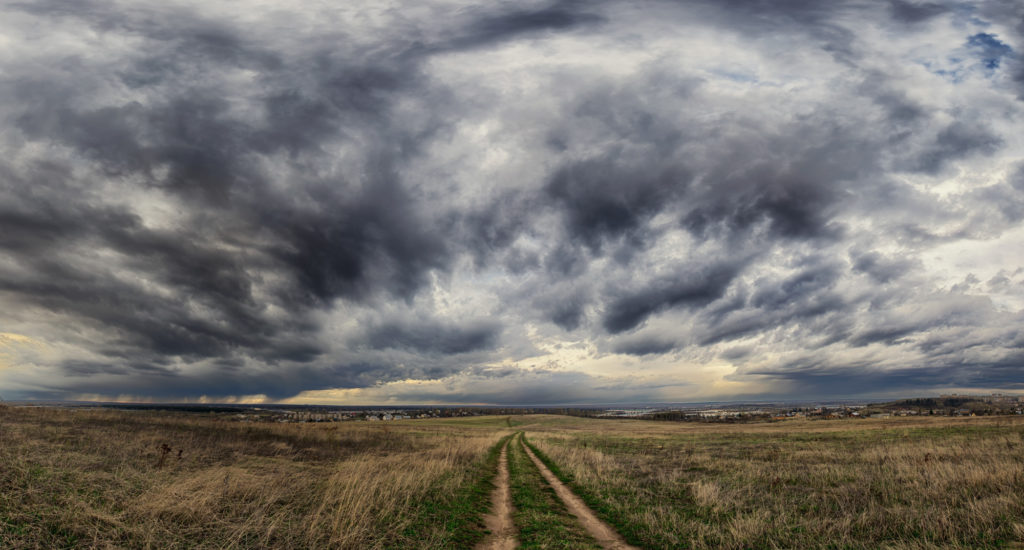
Last month, I wrote about large-scale, long-lived, convective complexes; Mesoscale Convective Systems (MCS) and Mesoscale Convective Complexes (MCC). To review, as a pilot, you must know of their presence and you must give them the widest berth possible. Delaying, diverting or cancelling a flight are all legitimate options owed to the formidability of these aerial monsters. Here, I will add to the discussion by addressing an offspring of these systems. This spawn is called a “derecho” (deh-RE-cho). First coined in 1888 by Dr. Gustavus Hinrichs, a physics professor at the University of Iowa, the term was derived from the Spanish word for “direct” or “straight ahead” in contrast to the word tornado, which derives from the Spanish word meaning “to turn.”
A derecho is a widespread, convectively-induced windstorm. The derecho can be thought of as a gust front that lasts for several hours, sweeps hundreds to possibly over 1,000 miles across the land, generates winds in excess of 50 knots and wreaks large-scale destruction. For a more technical definition and many case studies see: www.spc.noaa.gov/misc/abtderechos/derechofacts.htm. You’ll see that neither your airplane nor house should not be in the path of a derecho, but since we can’t move a house, always think about moving your airplane.
Your first line of defense in dealing with a derecho is to know what produces them. Derechos can result from MCS/MCC. If you know what to look for, you can find the culprits by checking the weather.
Hopefully, you know the website www.aviationweather.govand the various weather products to use to begin your hunt. In addition to looking at the Storm Prediction Center’s Convective Outlook, the Enhanced Convective Outlook Page (TCF/ECFP), the current Convective SIGMETS and the radar, look at the various satellite images for these connective blobs (MCC/MCS). From all of this, you just might come across the mention of a derecho in the making, but currently, there is no forecast product for derechos.
Reading about derechos, you’ll find a few common themes; downbursts and bow echoes. Downbursts are obvious hazards to airplanes and therefore don’t merit further discussion, but bow echoes do. When you look at ground-based weather radar, be on the lookout for the backward “C” in the radar return. (Bow echoes are named for the shape of an archer’s bow.) You will often find this radar signature leading the precipitation shield on a complex of storms. There is much to learn about why this signature can mean trouble (upper level winds being transferred to the ground). Heed my warning, this may be the signature of a potential derecho. This should be your indicator to dig deeper into your weather briefing. Also, let it be your reason to avoid bow echoes when you are flying.
Another note regarding ground radar and the potential presence of derechos: Sometimes on radar, you can see what are called “out-flow boundaries.” These are often echoes of light precipitation that precede a parent thunderstorm complex in the form of another backward C, well ahead of the main event. This too can be an indicator of a derecho. To be clear, this backward C is a very light radar return when compared to the previously discussed radar return.
A derecho can outpace its parent thunderstorm complex by at least a few miles. You should be alert to this when checking METARS and setting up for a takeoff or landing. While your destination may be in the clear as far as the precipitation shield goes, it may not clear be in terms of wind hazards. Don’t be caught off-guard or lulled into false security because the weather hasn’t yet hit. In the case of a derecho, it may have.Derechos are the spawn of Mesoscale Convective Systems and Complexes. Derecho’s are long-lived, long duration windstorms. They are in the family with gust fronts, microbursts and bow echoes. What I’ve shared with you is just the very basic information about derechos and weather in general. My job is to heighten your awareness of weather and to help you respect it. I hope to guide you to learn more.


































































































































